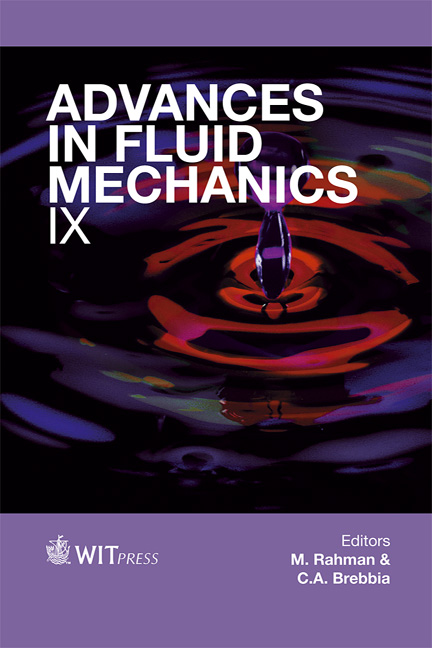Development Of A Computationally Efficient Bubble Column Simulation Approach By Way Of Statistical Bubble Micro-flow Modelling
Price
Free (open access)
Transaction
Volume
74
Pages
11
Page Range
275 - 285
Published
2012
Size
1,318 kb
Paper DOI
10.2495/AFM120251
Copyright
WIT Press
Author(s)
W. Coetzee, R. L. J. Coetzer & R. Rawatlal
Abstract
Bubble columns are extensively used in the chemical process industry, however their hydrodynamics are computationally expensive to simulate, severely restricting design and optimisation studies. A novel discrete-phase bubble column modelling approach is proposed where the flow-field in the immediate vicinity of individual bubbles is predicted from the Reynolds number via an algebraic bubble flow model, i.e. the Bubble Cell Model (BCM). This contrasts to the traditional Euler.Lagrange approach, where the flow structure is resolved at a larger scale using the Navier.Stokes equations. The construction of the BCM involves generating the micro-flow fields through solving the analogous case of the flow over a fixed sphere with the Navier.Stokes equations at 22 equally spaced Reynolds numbers in the operating range of Re . 270. The model construction then occurs in two stages, i.e. stage one: the fitting of each velocity vector field at the discrete Reynolds numbers, and stage two: the cross correlation of the stage one model parameters with respect to Reynolds number. For stage one, a hybrid between analytical and statistical models was found to provide accurate fits, resulting in R2 values ranging from 0.9968 to 0.9999. The Reynolds dependence of the parameters was found to be described through simple polynomial and exponential models in the second stage construction, producing a model which generates the velocity vector field around a bubble for a given Reynolds number as the result of a single algebraic evaluation. The integration of the BCM with a Eularian macro fluid model has also been investigated for a single bubble pilot test case. Keywords: bubble flow, Euler.Lagrange, cell model.
Keywords
bubble flow, Euler-Lagrange, cell model.





